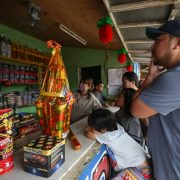Images of God

How do you, yourself, dear reader, see God? Have you ever tried to speak to God? Have you ever prayed to God for a special favor? Has He (or She) granted it to you? If you were to write a letter to God, how would you phrase your salutation to Her (or Him)?
The book, “Sacraments of Love: A Prayer Journal,” by the Roman Catholic (secular) priest Andrew M. Greeley (1928 to 2013), is one of those containing his daily letters to God. These letters all start with the declaration “My Love,” and thus are gender-free.
Fr. Andrew Greeley had multiple occupations—sociologist, novelist, pollster (National Opinion Research Center, University of Chicago), journalist, university professor—but wanted to be called a priest, unhyphenated. It was my great privilege to be his friend, from when we first met at the 1990 International Social Survey Program (issp.org) conference in Austria.
Andrew—we used first names—was great fun to be with at the annual ISSP gatherings. He could openly bark, “f**k the ASR (the American Sociological Review)!” He should have been at the 1998 ISSP meeting in Manila, had it not messed with the need to share his 70th birthday with his very close family.
Father Andrew was a marvelous storyteller; try any of his novels. They are earthy, without being crude. Try one of his homilies (see “My favorite priest,” 3/16/13, written two months before his untimely passing).
The ISSP surveys of religion. Father Andrew was the intellectual leader of the ISSP surveys on religion, which have been done since 1991. The Philippines, represented by Social Weather Stations (SWS), is included in all these ISSP surveys. They are the main source of empirical data on Filipino religiosity and religious practices.
Eighty-one percent say they have no doubt about God; 9 percent say they believe in God, with a few reservations; 3 percent believe only sometimes, not always; 2 percent believe in a higher power; 2 percent are agnostics; 3 percent are atheists.
With respect to life after death, 62 percent of Filipino adults say it is definitely true, and 19 percent say it is probably true. Belief in heaven is 93 percent, and belief in hell is 81 percent. (See “An afterlife? Yes,” 11/05/11 and “Heaven and hell? Yes also,” 11/12/11).
The people’s images of God? In addition to the main or obligatory ISSP question items on religion, Father Andrew also proposed a few optional questions on images of God, to be asked after the main questions. He even offered to personally subsidize the extra cost (which he could afford from the sales of his books; he was a philanthropist). SWS was one of the members that tried out his proposal, but we declined the subsidy.
Father Andrew’s basic probe into how people see God runs like this: “On a scale of numbers from 1 to 7, where would be your image of God, if 1 stands for Mother, and 7 stands for Father?”
As surveyed in 2008, the last time that SWS did this, 18 percent of Filipinos chose number 1, 40 percent chose number 7, and 25 percent chose number 4, i.e., midway between Mother and Father. Some chose numbers 2 or 3, which lean toward motherly; others chose numbers 5 or 6, which lean toward fatherly. But the great majority could choose a number, indicating that the two parental images are meaningful to Filipinos (and the other nationalities of ISSP).
The 2008 SWS survey found other images of God visible to Filipinos. Twenty percent of us see God as a master, 37 percent see God as a spouse, and 20 percent see God as midway between the two, or “both.” Of course, master and spouse (not slave!) are not opposites as words, whatever the language of the survey interview; it is enough that they are contrasting images and that the contrast can be depicted by a number.
More SWS results for Filipinos: God is seen as a judge by 29 percent, seen as a lover by 25 percent, and seen as both (midway from judge to lover) by 22 percent. God is seen as a king by 34 percent, seen as a friend by 29 percent, and seen as both (midway from king to friend) by 17 percent.
Mother/father, master/spouse, judge/lover, king/friend? None of these images is wrong; all of them are revealing. Each one evokes characteristics that people can relate to. They are among the images that people can sense, understand, and articulate. These images, and many more, can help us get closer to God.
—————-
Contact: mahar.mangahas@sws.org.ph.
Dr Mahar Mangahas is a multi-awarded scholar for his pioneering work in public opinion research in the Philippines and in South East Asia. He founded the now familiar entity, “Social Weather Stations” (SWS) which has been doing public opinion research since 1985 and which has become increasingly influential, nay indispensable, in the conduct of Philippine political life and policy. SWS has been serving the country and policymakers as an independent and timely source of pertinent and credible data on Philippine economic, social and political landscape.





















